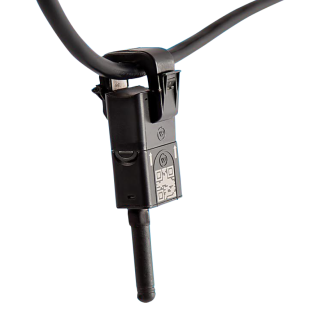5 Ways Wireless Energy and Equipment Monitoring Reduces Costs in Hospitality and Retail
5 ways to reduce energy use and extending equipment life with CT300 wireless monitoring
Hospitality and retail businesses face razor-thin margins, rising energy costs, and growing customer expectations for sustainability. According to the U.S. Energy Information Administration, commercial buildings waste up to 30% of the energy they consume due to inefficient operations. For hotels, restaurants, and retail stores that rely on energy-intensive equipment, that’s money leaking out of the bottom line every day.
Wireless energy and equipment monitoring solutions — powered by IoT sensors and secure wireless connectivity such as LoRaWAN® and cellular IoT — help organizations track usage, detect inefficiencies, and optimize operations in real time. Here are five proven ways these technologies reduce costs in hospitality and retail.
1. Cut Energy Waste from HVAC and Refrigeration
Heating, ventilation, air conditioning (HVAC), and refrigeration can account for 40–60% of total energy use in hospitality and food retail. Small inefficiencies, like a walk-in cooler door left open or an HVAC unit running during unoccupied hours, add up fast.
Example: A global fast-casual restaurant chain deployed wireless current transformers to track cooler performance. They identified doors left open for extended periods and reduced energy waste by 15% per location, saving thousands annually across hundreds of sites.
2. Prevent Equipment Failures Before They Happen
Unexpected equipment downtime is costly: A broken freezer can result in $5,000–$20,000 in spoiled food inventory within hours. Wireless condition monitoring detects anomalies like power spikes, abnormal runtimes, or unusual temperature fluctuations, enabling preventive maintenance before failure.
Example: A U.S. hotel group equipped its laundry machines and kitchen ovens with wireless power monitoring. By catching motor wear early, they reduced unplanned downtime by 25%, keeping guest services running smoothly and protecting brand reputation.
3. Optimize Staffing and Operations
Labor is one of the largest expenses in hospitality and retail. Wireless monitoring can reduce manual tasks like checking freezer temps or logging energy readings. Instead, staff receive automated alerts and reports, freeing them for higher-value customer service.
Example: A regional grocery chain eliminated daily manual temperature checks in 100 stores by using wireless temperature and power sensors. This saved each location 8 labor hours per week — equivalent to nearly one part-time employee per store.
4. Reduce Utility Costs with Load Management
Utility costs continue to climb — the average U.S. commercial electricity price rose 11% between 2021 and 2023 (U.S. Bureau of Labor Statistics). Wireless monitoring helps businesses identify peak usage times and shift loads to off-peak hours, avoiding costly demand charges.
Example: A resort in Florida discovered that pool pumps and laundry equipment were operating during peak billing periods. By scheduling usage during off-peak hours, they cut monthly energy bills by 12%, saving over $30,000 annually.
5. Support Sustainability and Compliance Goals
Hospitality and retail brands face pressure from regulators and eco-conscious consumers to demonstrate sustainability. Wireless monitoring provides the data needed for ENERGY STAR® reporting, LEED certification, and ESG audits. It also supports food safety compliance by providing proof of equipment uptime and temperature stability.
Example: A national coffee shop chain used IoT-based monitoring to validate refrigeration compliance with FDA food safety guidelines. They reduced compliance reporting time by 80% while using the same data to showcase sustainability gains to customers.
The Bottom Line
From reducing food waste and energy bills to preventing downtime and boosting sustainability, wireless energy and equipment monitoring is a proven driver of ROI in hospitality and retail. With low-cost IoT sensors and scalable connectivity, even small businesses can achieve significant savings — often paying back investments in less than a year.
Ready to reduce costs and protect your bottom line?
Contact MultiTech today to learn how our IoT connectivity solutions — including LoRaWAN® sensors, current transformers, and industrial cellular routers — can help you connect data to decisions, reduce costs, and deliver smarter hospitality and retail operations.

High-Resolution Insights
The CT300 delivers current measurements, providing immediate visibility into energy usage across circuits and equipment—enabling faster decisions and more accurate trend analysis.
Wireless & Self-Powered Design
Powered by the current it measures and transmitting via LoRaWAN®, the CT300 eliminates the need for complex wiring, batteries, or external power—making installation fast, safe, and low maintenance.
Scalable, Non-Intrusive Monitoring
Easily clamp onto existing circuits without downtime or service interruption. The CT300 scales effortlessly across multiple locations or panels for comprehensive energy tracking.
Actionable Data for Cost & Efficiency Gains
Empowers facility teams, sustainability managers, and building operators to reduce energy waste, identify abnormal loads, and improve operational efficiency—backed by reliable, actionable data.